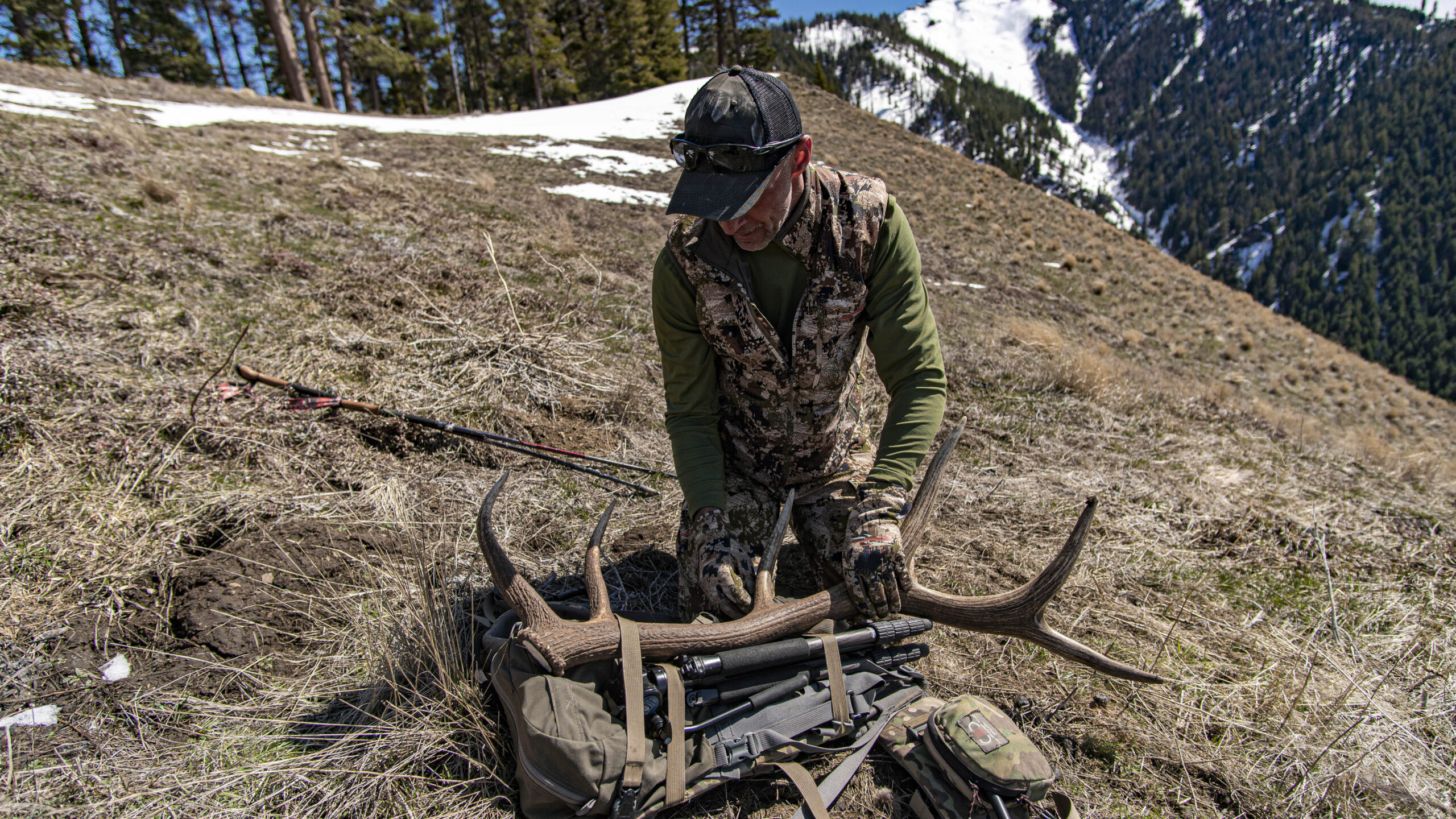By Vivien Felker
Many factors that make or break an elk hunt are out of your control: the wind swirls and sends your scent right into the nose of an incoming bull or another hunter pushes the herd out of the drainage.
However, you can control your physical fitness. We interviewed elk hunting and calling legend Corey Jacobsen and garnered these tips to maximize your performance in the mountains.
Something is better than nothing
It is important to keep in mind that physical fitness looks different for everyone. You may have personal commitments that limit your time in the gym, or injuries that keep you from doing certain exercises. Whatever your limitations, make sure you get some kind of physical activity in daily. A small effort will compound over time into results, and your body will thank you. Elk hunting aside, having an active lifestyle will also reduce your risk of injury and strengthen your mental fortitude. However, remember to start out slow and increase gradually to avoid injury.
Cardiovascular conditioning
You can rack up a lot of miles quickly while hoofing it after elk. To improve your stamina, there are many cardio exercises to add to your workout routine. Burpees, hill sprints and jogging are all guaranteed to get your heart rate up. For exercises that have a lower joint impact than running, Corey recommends swimming, using a stair stepper, stationary biking or his personal favorite—hiking in the mountains with a loaded pack. When you’re putting a lot of stress on your muscles during the hunting season, a strong cardiovascular system is critical.
Back and core
Having a strong core is vital to making your packout less painful and to prevent back injury. Your core contains the stabilizing muscles that you need to carry a heavy load on your back. Corey specifically recommends doing “roll outs” using a piece of equipment called an ab wheel. However, he says that additional exercises such as plank variations and Russian twists should also be incorporated to work deeper parts of the core. Corey particularly likes side planks or spider-man planks. Try planking while you watch TV or short elk hunting videos online. He emphasizes that as with all exercise, it is important to ease into a core routine by listening to your body and increasing the intensity and duration of your exercise as it feels comfortable.
Lower body
When your legs start burning or cramping while you’re hiking, it’s tell-tale sign of soreness and exhaustion. But calling it a day may rob you of an opportunity at the elk just over the next hill. Consider performing squat and lunge variations in the off-season to build your leg strength. When doing squats, having the correct form is vital to making sure you aren’t doing more harm than good. Be sure your knees and shins are staying vertical and behind your toes as you go down into the squat so that you don’t hurt your knees. It helps to turn your toes out slightly to be sure you’re not straining your knees.
Pack workouts
Lace up your boots this summer and throw on your pack. Corey consulted Russ Meyer, Elk101 prostaff member, to learn more about his workout program. All you need to participate is a hill and a pack. The weighted pack is a critical element of this routine because Russ believes it “breaks your body in” for carrying weight come elk season. He brings a variation of weights with him to be able to carry as much or as little depending on how he feels that day. He begins with a medium amount of weight on his back, about 70lbs (if you’re not used to carrying weight make sure you start very light and slowly work up) and starts to slowly jog up the hill about a quarter mile. Once he’s up the hill, he does some pushups with the pack on, squats and step-ups onto boulders. As the final kicker of the workout, Russ sprints up the hill one final time, which he says is to simulate, “that bull that’s running over the hill and you’re doing everything in your power to catch him.”
Practice in what you play in
You may want to gauge your hunting fitness in the summer as you near the season by attending a 3D archery event if there are any in your area. This can be a great “test run” of a hunt. At a 3-D shoot you will be climbing hills and shooting at targets while wearing your hunting gear. Not only will you test your physical fitness and get a great workout in, but you can also assess how your range time translates to a hunt. When you’re shooting in your backyard, you’re not facing the same terrain or exhaustion you will be in the field, and just like you don’t want to test out your brand-new hiking boots on an elk hunt, you don’t want to pull your bow back in realistic shot scenarios for the first time when an elk steps out in front of you.
You have enough hurdles ahead of you on an elk hunt, so don’t let physical fitness be a limiting factor. Following these tips will help prepare you to go after the herd over the next ridge this coming fall.
Want more tips on staying in elk-season shape? See Corey’s sample workout plans and videos at outdoorclass.com and use code RMEF30 to get a 30% discount.
